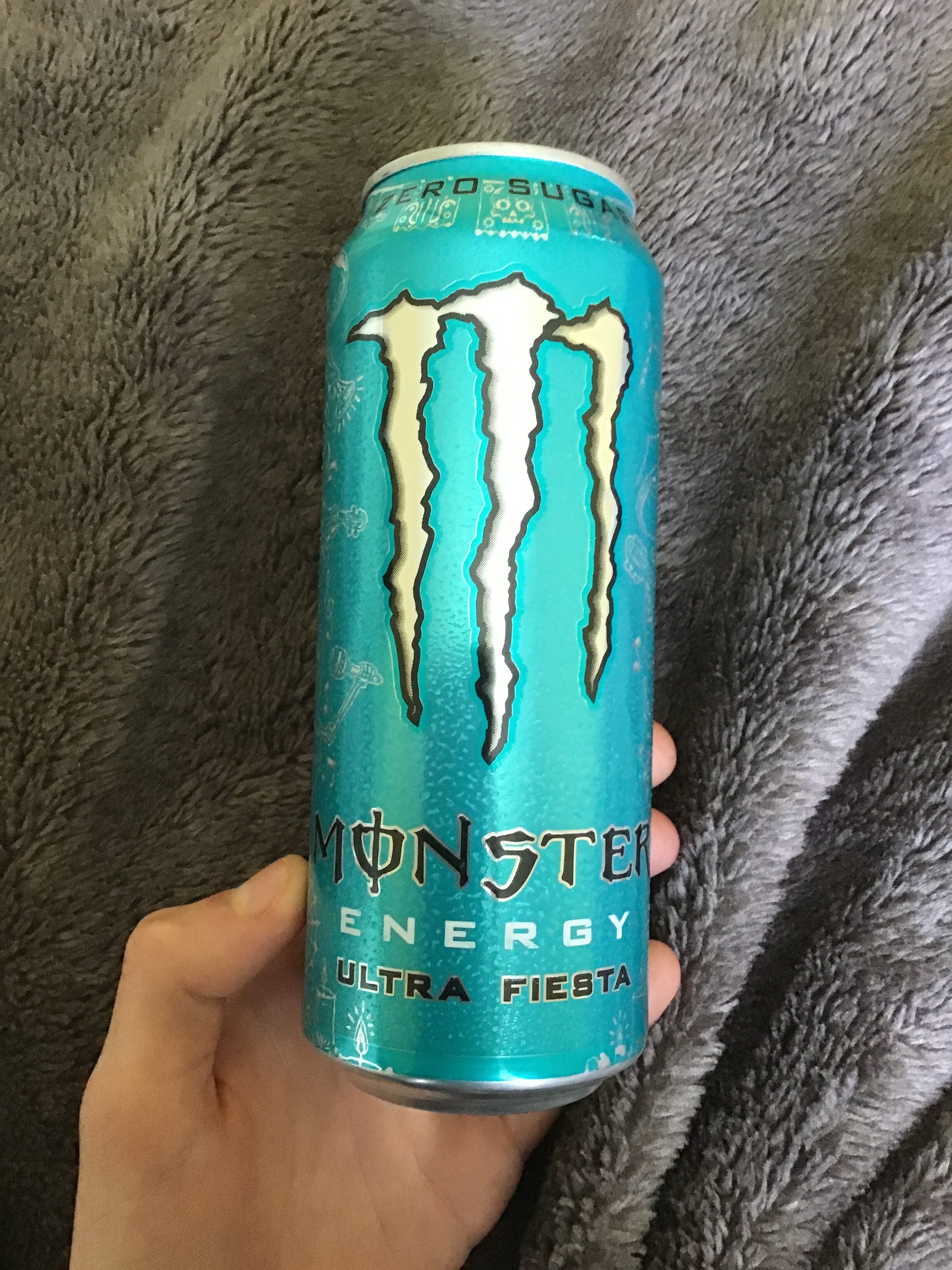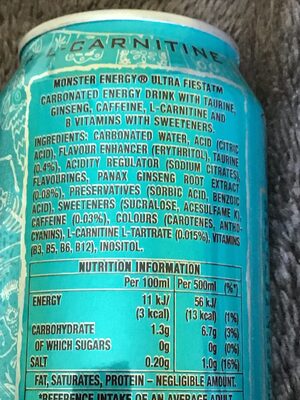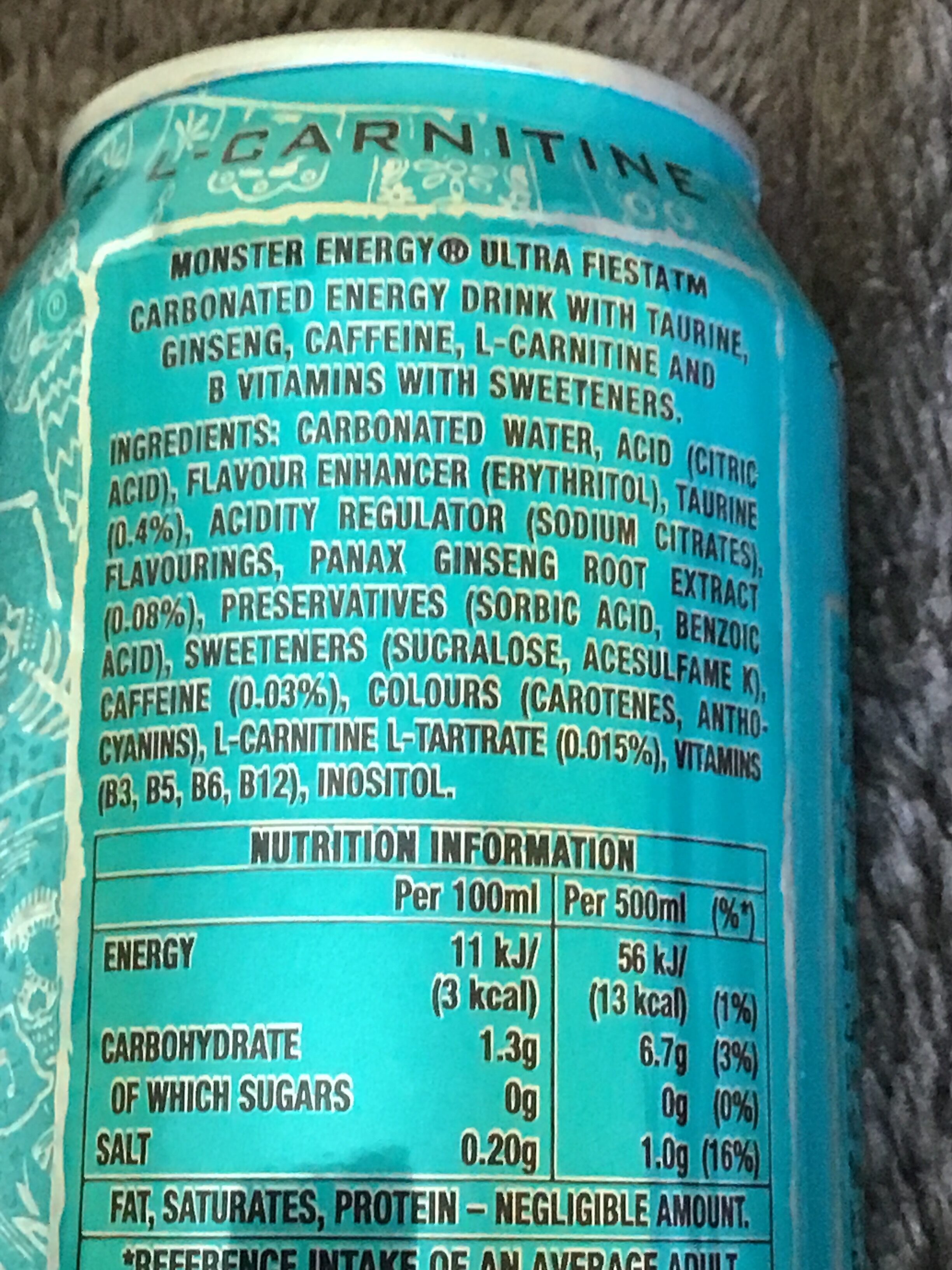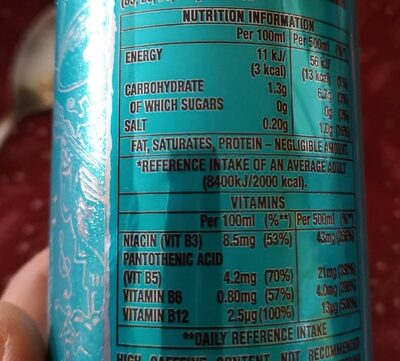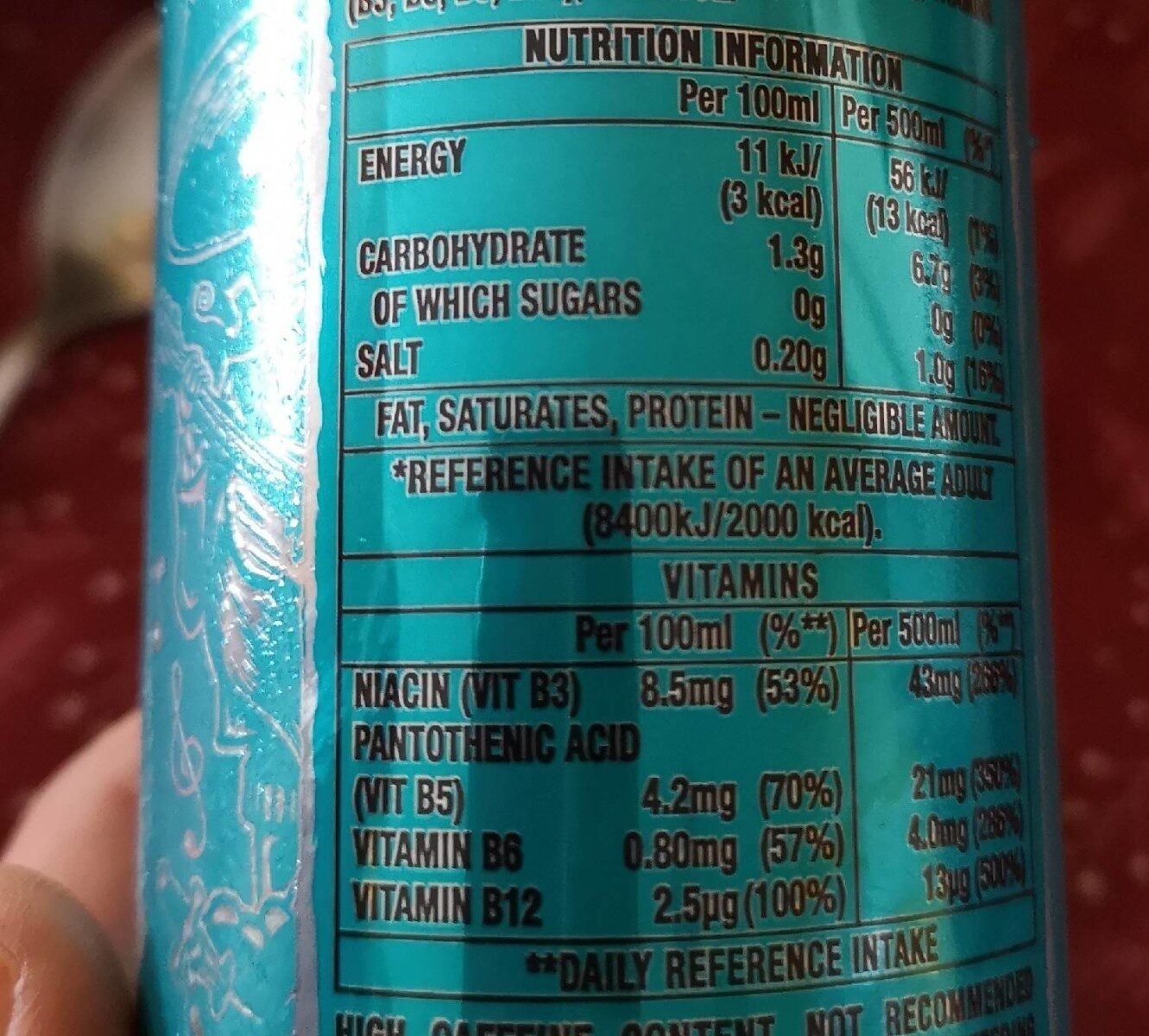Ultra Fiesta - Monster - 500ml
This product page is not complete. You can help to complete it by editing it and adding more data from the photos we have, or by taking more photos using the app for Android or iPhone/iPad. Thank you!
×
Barcode: 5060608747658 (EAN / EAN-13)
Common name: Energy drink
Quantity: 500ml
Packaging: Aluminium-tin
Brands: Monster
Categories: Beverages, Artificially sweetened beverages, Energy drinks
Origin of ingredients: United Kingdom
Link to the product page on the official site of the producer: https://www.monsterenergy.com/gb/en/prod...
Countries where sold: United Kingdom
Matching with your preferences
Environment
Packaging
Transportation
Report a problem
Data sources
Product added on by swipe-studio
Last edit of product page on by vernst2.
Product page also edited by aleene, danno, kiliweb, yuka.sY2b0xO6T85zoF3NwEKvlkNrTfXd_xH9MjnQln-yy9nTMIDHMOhDxNL-Lqs.

